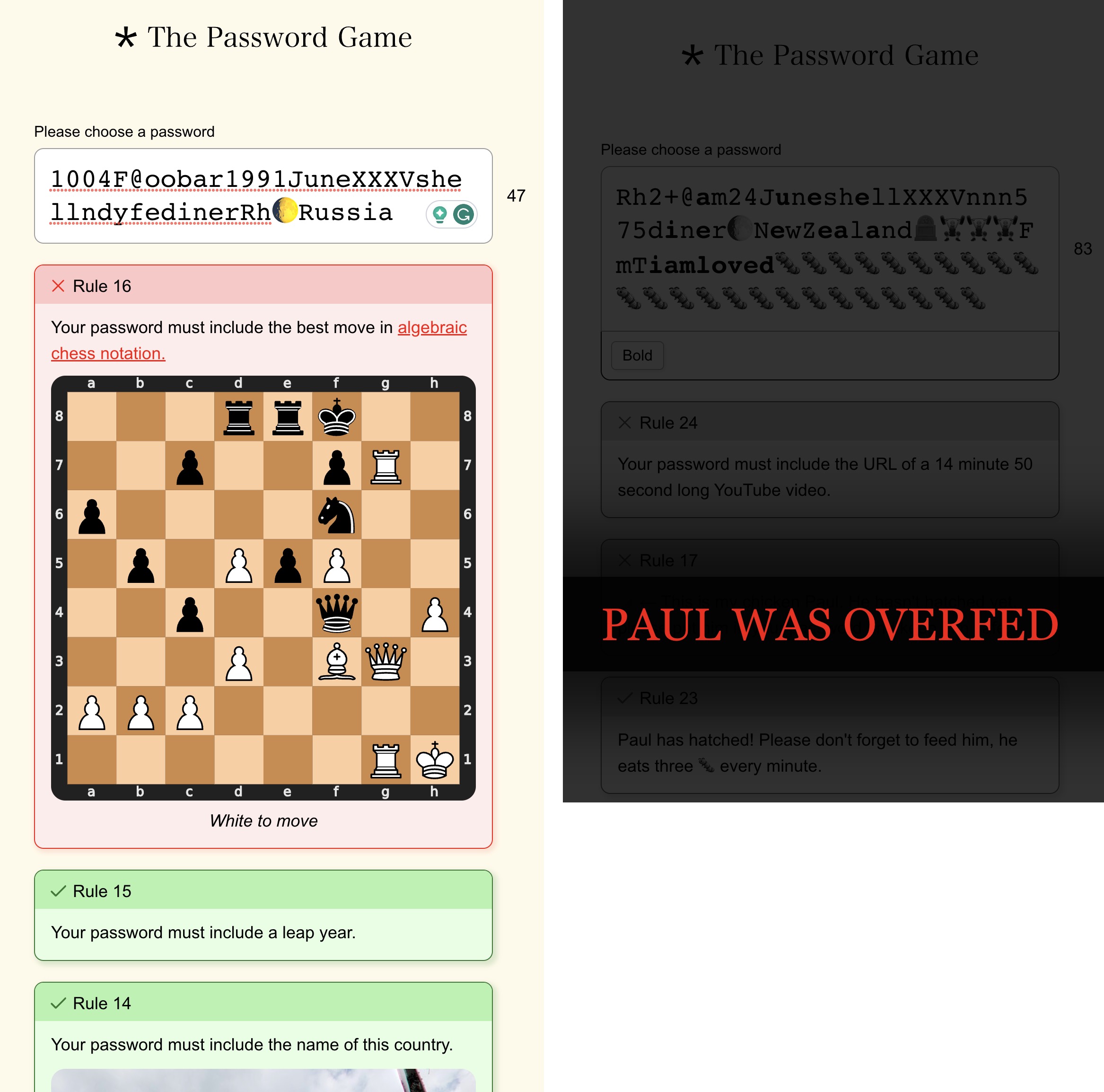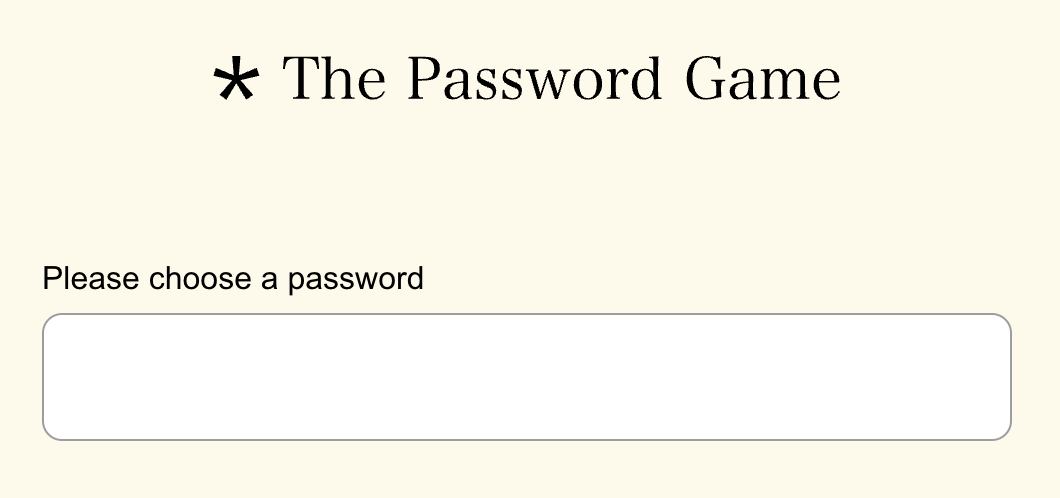The Password Game Is Fun, Frustrating, and Educational
If you enjoy puzzles, check out The Password Game by Neal Agarwal. It simply asks you to choose a password. How hard could that be? As good Internet users, we all know about making passwords that meet the standard requirements, such as a minimum length, having both uppercase and lowercase letters, adding at least one digit and a special character, and more.
Such passwords are for pikers. The Password Game has 35 rules that you must satisfy, one after another, as you attempt to create a password. The rules start simple, ensuring that your password is at least five characters and includes a number, an uppercase letter, and a special character.
But then the puzzles start, forcing you to add more to your password and often change what you’ve done previously. The digits in your password must add up to 25. Easy enough. A month of the year? No problem. A Roman numeral? Everyone knows one of those. But after identifying a corporate logo, suddenly you’re told that the Roman numerals in your password must multiply to 35. Then you’re required to enter a CAPTCHA, which is easy enough, but any numbers in it break the rule about the digits adding up to 25. No worries, just change your password’s digits until you’ve satisfied that rule again.
Wait, it wants today’s Wordle answer? (It’s not kidding; the answer changes every day.) That’s the beginning of the questions that require research and may force you to learn new skills. Can you figure out what the current phase of the moon is and find the matching emoji? (Hint: choose Edit > Emoji & Symbols and perform a search.) Identifying a country from a Google Street View image is significantly more challenging—you may be able to zoom in to get a clue from a sign, but if not, it’s an excuse to learn how to do a reverse image search in Google Images from a screenshot.
Eventually, you’ll hit Rule 16, which wants the “best” move on a randomly generated chess board in algebraic chess notation. It’s easy enough to figure out the necessary notation with the provided link, but what you may miss is that if you’re putting the opposing king in check, you must add a + character. I’m not sure I agree with the required move being “best” in all cases, but my chess knowledge is limited to knowing how the pieces move.
Once you get past the chess puzzle, The Password Game adds a videogame element. You have to add an egg emoji that will hatch into a chicken named Paul, and once he hatches (after some other drama), you have to feed him emoji caterpillars, which disappear at a rate of one every 20 seconds. Stressed out by having to keep pasting more caterpillars while learning how to search for a YouTube video of a specific duration, I pasted too many caterpillars in and was abruptly informed that I had overfed Paul, ending the game at Rule 24. Curses, foiled again! I would feel worse, but even the game’s creator hasn’t completed it successfully.

Although a few of the puzzles change, like the Wordle answer, identifying a country from a picture, and the chess board, The Password Game isn’t something you’ll play every day. But I can certainly see playing until you beat it.
And now, if you’ll excuse me, I have to see what comes after the YouTube video while keeping Paul the chicken properly fed. Once I solve it, I plan to check out the rest of Neal Agarwal’s mini-sites. Some are games; others are more social commentary, but all those I’ve looked at are amusing.

Currently infuriating me at step 16 tells me my move is illegal, which it isn’t…
Are you trying Rg8+? Or maybe try Ng6+?
Rg8 was my input. The + was the thing…
But now
Yeah, adding up the atomic weights of all the elements in the password was tricky. I had to remove some (lowercasing works sometimes) so I could control which were counted.
There’s a lot to enjoy on his wider site too as you point out
I wish I was even half enough clever to complete it but I surely enjoy reading about it.